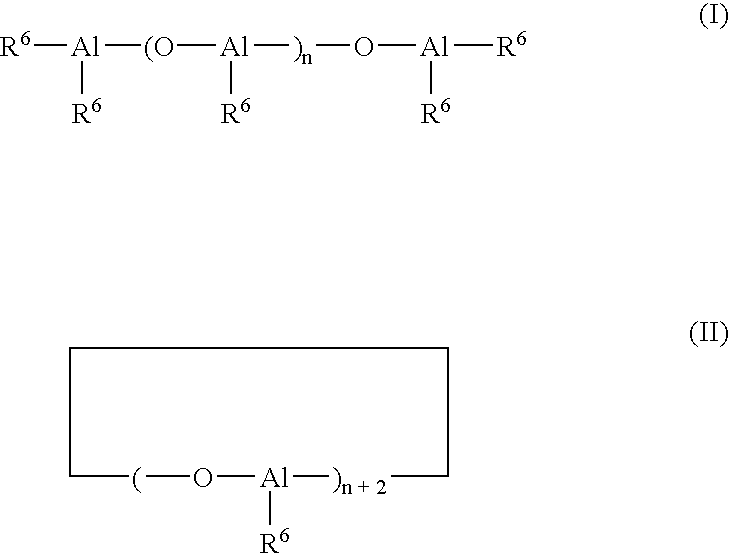Method for producing modified conjugated diene polymer and rubber composition
a conjugated diene polymer and rubber technology, applied in the direction of special tyres, transportation and packaging, tyre parts, etc., can solve the problems of insufficient effect of modifying the rubber composition into and the actual situation of modifying the rubber composition in which silica or carbon black have been incorporated is scarce, so as to improve the quality stability, mechanical characteristics and processability, and enhance the effect of low heat buildup
- Summary
- Abstract
- Description
- Claims
- Application Information
AI Technical Summary
Benefits of technology
Problems solved by technology
Method used
Image
Examples
example 1 (
PRODUCTION OF MODIFIED POLYMER A)
[0150]A 5-liter autoclave whose inside atmosphere was replaced with nitrogen gas was charged with 2.4 kg of cyclohexane and 300 g of 1,3-butadiene under nitrogen gas. A catalyst, which was previously prepared by reacting and maturing a cyclohexane solution of neodymium versatate (0.09 mmol), a toluene solution of methylalumoxane (hereinafter also referred to as “MAO”) (1.8 mmol), a toluene solution of diisobutylaluminum hydride (hereinafter also referred to as “DIBAH”) (5.0 mmol) and diethylaluminum chloride (0.18 mmol), and 1,3-butadiene (4.5 mmol) as catalyst components at 50° C. for 30 minutes, was added thereto, and polymerization was conducted at 80° C. for 60 minutes. The reaction conversion of 1,3-butadiene was approximately 100%. Then, 200 g of the resulting polymer solution was taken out, and a methanol solution containing 1.5 g of 2,4-di-tert-butyl-p-cresol was added thereto to terminate polymerization. Thereafter, the solvent was removed b...
example 2 (
PRODUCTION OF MODIFIED POLYMER B)
[0153]A modified polymer was produced by the same manner as with Example 1 with the exception that an aqueous solution adjusted to pH 12 with sodium hydroxide was substituted for the aqueous solution adjusted to pH 10. The conditions of the modification and condensation and the results of the reaction are shown in Table 1.
example 3 (
PRODUCTION OF MODIFIED POLYMER C)
[0154]A modified polymer was produced by the same manner as with Example 1 with the exception that condensation reaction was conducted at 125° C. for 2 hours, together with desolvation. The conditions of the modification and condensation and the results of the reaction are shown in Table 1.
PUM
| Property | Measurement | Unit |
|---|---|---|
| temperature | aaaaa | aaaaa |
| temperature | aaaaa | aaaaa |
| temperature | aaaaa | aaaaa |
Abstract
Description
Claims
Application Information
 Login to View More
Login to View More - R&D
- Intellectual Property
- Life Sciences
- Materials
- Tech Scout
- Unparalleled Data Quality
- Higher Quality Content
- 60% Fewer Hallucinations
Browse by: Latest US Patents, China's latest patents, Technical Efficacy Thesaurus, Application Domain, Technology Topic, Popular Technical Reports.
© 2025 PatSnap. All rights reserved.Legal|Privacy policy|Modern Slavery Act Transparency Statement|Sitemap|About US| Contact US: help@patsnap.com

